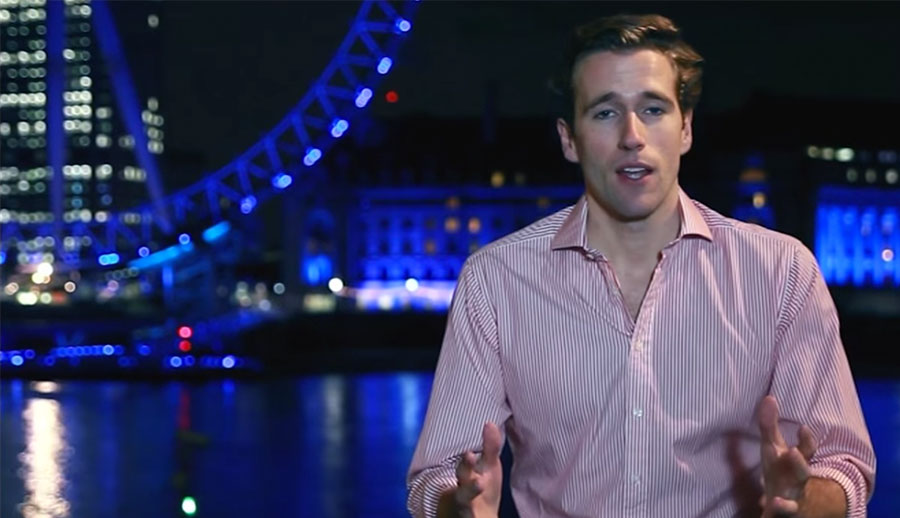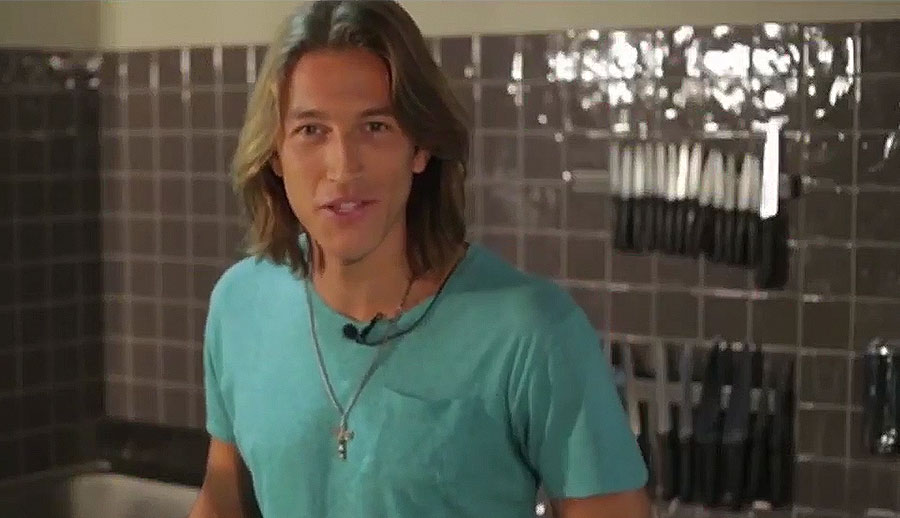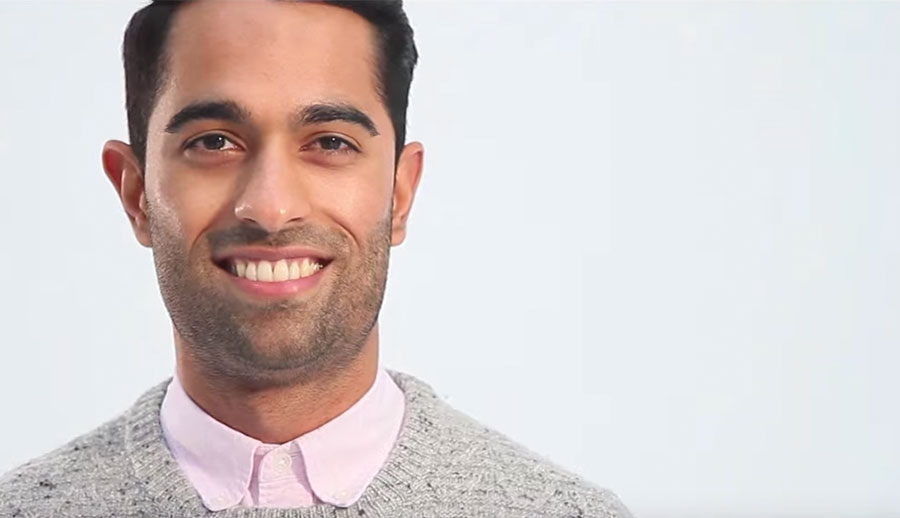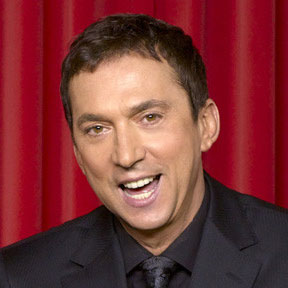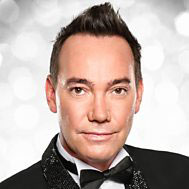-
.
-
Award-Winning Fast Track Programme
- The Original - voted the UK’s Best Presenter Course.
- Your ONLY opportunity to work with BAFTA, NTA winning Executive TV Producers and BBC Talent Executives - BBC/ITV/Channel 4/Channel 5//CBBC/BBC NEWS/SKY1 etc.
- NO EXPERIENCE REQUIRED – we kind of prefer it that way!
- Tailor-made training for each client - max 4 clients.
- Perfect for aspiring presenters, influencers and business people to maximise your presenting skills.
- Incredible Success Rate & 5 Star Reviews. The ONLY course endorsed by TV agents, TV companies and TV Channels.
- Clients win a place on our Talent Database - we put you up for our exclusive presenter jobs and amazing industry opportunities.
Why We're Voted The Best
Displaying items by tag: public speaking course
How to Overcome the Fear of Public Speaking with the Right Course
The fear of public speaking is one of the most common phobias — and it holds many professionals back from progressing in their careers. But it doesn't have to be that way. At The Presenter Studio, we specialise in helping people overcome anxiety and build lasting confidence through our expert-led public speaking courses.
Our approach is supportive and practical. We don’t throw you into the deep end or expect you to deliver a perfect speech on day one. Instead, we break down the process, helping you understand where nerves come from and how to work with them, not against them.
You'll learn how to prepare in a way that reduces stress, how to manage your breathing and body language, and how to stay present during your delivery. We’ll also help you refine your key messages so you always have something clear and compelling to say.
Many clients who were once terrified of public speaking now thrive in high-pressure situations — from major pitches to media interviews. They credit our personalised feedback, industry insights, and down-to-earth teaching style as the reason they finally found their voice.
If fear has held you back, now’s the time to take control.
For more information about our training programmes visit: https://www.presenterstudio.com/business-presenter-training/presentation-skills-training
Why Public Speaking Courses Are Essential for Career Success in 2025
In today’s competitive business environment, strong communication skills aren’t a nice-to-have — they’re essential. Whether you're in management, marketing, HR or sales, being able to speak confidently and clearly can set you apart. That's why our public speaking courses are more in-demand than ever.
At The Presenter Studio, we don’t believe in a one-size-fits-all approach. Every course is bespoke, shaped around your personality, your profession, and your goals. We’ve trained CEOs, entrepreneurs, academics and media professionals — helping each of them to develop their own unique speaking style.
A good public speaking course should help you build authority, trust and connection. Our sessions focus on message development, body language, vocal delivery, and managing nerves. You’ll learn how to keep your audience engaged, even when the subject matter is complex or technical.
Clients often tell us how our training has boosted not only their presentation skills, but also their overall confidence. This has led to job promotions, successful pitches, and greater leadership presence.
Investing in your ability to speak well isn’t just about performing in front of a crowd. It’s about owning every room you walk into — whether it’s an internal meeting or a keynote event.
For more information about our training programmes visit: https://www.presenterstudio.com/business-presenter-training/presentation-skills-training
Public Speaking Courses That Actually Work: Proven Techniques from Industry Experts
If you're looking for a public speaking course that goes beyond theory and delivers tangible results, you've come to the right place. At The Presenter Studio, our courses are designed by top TV producers and communication experts who understand what it takes to engage an audience and inspire confidence.
Our public speaking training is focused on helping you find your authentic voice. We steer away from teaching generic scripts or textbook techniques. Instead, we work with you to unlock your personal style so you can speak with warmth, clarity, and conviction. Whether you're presenting to a boardroom, a live audience, or virtually via Zoom, we tailor our guidance to the real-world challenges you face.
One of the key reasons our clients achieve lasting success is because we focus on storytelling and message delivery. Rather than relying on memory or bullet points, you'll learn how to connect with your audience on a human level — something that's increasingly important in today’s business world.
Public speaking doesn't have to be intimidating. With the right support and practical techniques, anyone can become a confident communicator.
For more information about our training programmes visit: https://www.presenterstudio.com/business-presenter-training/presentation-skills-training
How to Be a Warm and Engaging Public Speaker
In public speaking, being seen as warm and relatable is just as important as being informative. Audiences don’t just want facts – they want to feel something. They want to feel connected to you. And the most successful speakers know how to strike that perfect balance between authority and approachability.
At The Presenter Studio, we train our clients to lead with warmth – because it builds trust. And trust makes your message more memorable, persuasive and impactful.
So how do you come across as warm? It’s not about being overly smiley or rehearsed. It’s about creating a sense of genuine connection. First up: smile when it feels right. A natural smile at the start of your talk goes a long way in lowering the temperature in the room and inviting people in.
Next, make eye contact. Not with the back wall. Not with your slides. But with your audience. Move your gaze across the room. Look at individual people – hold their attention for a moment, then move on. This gives everyone a sense that you’re speaking with them, not just at them.
Language matters too. Speak conversationally. Avoid jargon. Imagine explaining your ideas to someone over a coffee, not reading them out of a report. Let your personality come through in the way you talk. It doesn’t dilute your professionalism – it enhances your credibility.
What you wear and how your slides look can also add or take away warmth. Choose clothing that feels authentic to you and appropriate to the environment – not overly formal, but still polished. When it comes to slides, go for visual simplicity and storytelling, not pages of text. Slides should support your presence, not compete with it.
Public speaking is an opportunity to show not just what you know, but who you are. And when your audience likes you, they’ll listen more closely.
To develop your own warm, authentic speaking style, explore our coaching at The Presenter Studio: https://www.presenterstudio.com/business-presenter-training/presentation-skills-training
Public Speaking Skills That Make You Stand Out
Public speaking isn’t about being perfect. It’s about being present, engaging and real. At Presenter Studio, we coach people from all industries to speak with confidence and clarity – whether they’re delivering a keynote, presenting at work or standing on stage for the first time.
One of the biggest mistakes people make is focusing too much on themselves. Instead, shift your attention to the audience. What do they need from you? What do you want them to take away? Speaking with purpose helps calm nerves and gives your message focus.
We also work on voice and pace. Slowing down not only helps the audience understand you better – it gives you time to think. Try pausing between ideas. Pauses add power and allow your key messages to land.
Movement matters too. When presenting, avoid pacing or fidgeting. Instead, stand still for impact and walk only when you’re changing energy or introducing a new idea. This creates structure and keeps the audience grounded.
If you’re looking to elevate your public speaking, work with coaches who understand how to bring out your natural style. That’s what our training is all about – helping you become the most confident and authentic version of yourself on stage.
Find out more here:
https://www.presenterstudio.com/business-presenter-training/presentation-skills-training
Public Speaking and Presentation Course
Public speaking is one of the most valuable skills in business, yet it's also one of the most feared. Our public speaking and presentation course is designed to help you overcome nerves and learn how to connect with any audience.
The fear of speaking often comes from uncertainty – what to say, how to say it, and whether people will listen. That’s why our training focuses on preparation and confidence. We help you build structure into your talk, so you always know where you’re going. We coach you to breathe well and use your voice with energy, not volume.
One useful tip is to practice your opening out loud, multiple times. Your first 30 seconds matter the most – that’s when the audience decides if they’ll pay attention. A strong start, with clarity and eye contact, sets the tone for everything that follows.
We also explore how to deal with nerves in the moment. Instead of trying to “get rid” of them, we show you how to channel nervous energy into positive performance. Confidence isn’t about pretending you’re not nervous – it’s about performing well in spite of it.
To find out more and book your place, visit: https://www.presenterstudio.com/business-presenter-training/presentation-skills-training
How to Overcome Nerves Before a Public Speaking Event
Nerves are normal. Even the most experienced speakers feel them. It’s your body’s way of preparing you for something important. But nerves don’t have to control you. With the right tools, you can channel that energy and walk into your talk with focus and clarity.
The first thing is to breathe. Proper breathing grounds you. It slows your heart rate and helps you stay calm. Before you speak, take a few steady breaths in through your nose, and out through your mouth. Keep it slow and even. This tells your body you’re safe.
Next, reframe the nerves. Instead of thinking of them as fear, try to see them as excitement. The same adrenaline rush that makes you anxious is the one that sharpens your mind and gives you presence. Tell yourself it’s your body getting ready to perform.
Preparation also plays a huge role. The more prepared you are, the more secure you’ll feel. That means knowing your message, not just memorising your lines. If you understand your core points and know where you're going, you’ll feel more confident even if you get thrown a curveball.
Finally, focus on the audience, not yourself. Nervous speakers often go inward, worrying about how they look or sound. Shift your attention outward. Think about the people in front of you. What do they need? What will help them? That simple shift makes a huge difference.
At Presenter Studio, we work with clients to turn nerves into confidence. Public speaking doesn’t have to be scary – it can be a space where you shine. Learn how in our full course at https://www.presenterstudio.com/business-presenter-training/presentation-skills-training
Keep It Short – Why Less Is More in Public Speaking
When you're asked to speak for thirty minutes, the goal isn’t to simply talk for thirty minutes. The goal is to deliver something of value.
One of the biggest mistakes speakers make is feeling they need to use every second they’ve been given. They go on too long. They repeat points. They fill space just for the sake of it. But audiences don’t measure the quality of a talk by its length. They remember how it made them feel. What it made them think. And whether it gave them something useful.
If you can land your message in twenty minutes instead of thirty, do it. If you can leave the audience with one great idea instead of five forgettable ones, that’s a win. Brevity shows confidence. It tells your audience you respect their time. It leaves space for questions or discussion. And it helps your key points stand out.
It also helps you stay in control. The more you ramble, the more likely you are to lose your thread or drift off course. By keeping things focused, you keep the energy in the room where it should be.
At Presenter Studio, we teach speakers how to structure talks with clarity and impact. Our training helps you make your message land – in less time, with more confidence. Take a look at the course here: https://www.presenterstudio.com/business-presenter-training/presentation-skills-training
Public Speaking Tips That Actually Work
Public speaking can feel intimidating, even for experienced professionals. But with the right approach, it’s a skill anyone can improve. At The Presenter Studio, we coach people from all walks of life - CEOs, creatives, academics and brand spokespeople—helping them find confidence and clarity in how they speak.
One of the most effective tips is to prepare your structure, not your script. A good presentation has a clear beginning, middle and end, but it shouldn’t sound robotic. Knowing your structure helps you stay on track while still sounding natural and responsive.
Another tip is to slow down. Nerves often make us rush. But speaking more slowly gives your audience time to absorb what you're saying—and gives you time to think. Pausing can be powerful.
A third tip: don’t just speak at people—engage with them. Make eye contact. Ask questions. React to the room. Public speaking should feel like a conversation, not a lecture.
At The Presenter Studio, we believe that great public speaking is about being yourself—just your best, most confident version. Find out how we can help you improve at: https://www.presenterstudio.com/business-presenter-training/presentation-skills-training
Public Speaking - Top 3 Tips for Success!
Public speaking can feel intimidating, but the truth is it’s a skill anyone can learn. At The Presenter Studio, we’ve helped people from all backgrounds become more confident and authentic speakers. Whether you're presenting in a meeting, on stage, or on screen, a few simple techniques can help you connect with your audience and communicate your message with clarity.
One of the most important tools in public speaking is eye contact. It helps build trust and shows your audience that you’re present with them. It’s not about staring or trying to look at everyone all the time. Just take a moment to make a natural connection with someone in the room, hold it briefly, then move on. If you’re speaking on camera, imagine you're talking to one person and look directly into the lens. It makes everything feel more personal.
Another powerful way to improve your presentation is to interact with your audience. Public speaking isn’t a monologue—it’s a moment of shared experience. Ask a question. Pause to let something land. React to the energy in the room. You don’t have to be overly informal, but even small moments of interaction make your audience feel involved and keep them engaged.
And don’t forget to smile. A smile can set the tone, put your audience at ease, and help you feel more relaxed too. It makes you more approachable and human. You don’t need to overdo it, just allow your expression to reflect the tone of what you’re saying. A genuine smile goes a long way in helping you come across with warmth and confidence.
These tips form the foundation of what we teach in all our training—whether it’s media coaching, public speaking support, or a full presentation skills course. The techniques may be simple, but they have a lasting impact when used with intention.
If you’d like more help with your speaking style, visit our presentation skills page: https://www.presenterstudio.com/business-presenter-training/presentation-skills-training
-
Watch Our Amazing Talent Taster Tapes
Talent Taster Tapes
We are the ONLY company to give you an industry recognised showreel.
That’s because we are the ONLY company to brand and market you for the genre of TV you are suited to.
In TV we call showreels 'Talent Taster Tapes' - and with us, that's what you'll get.
-
Optional Extras










